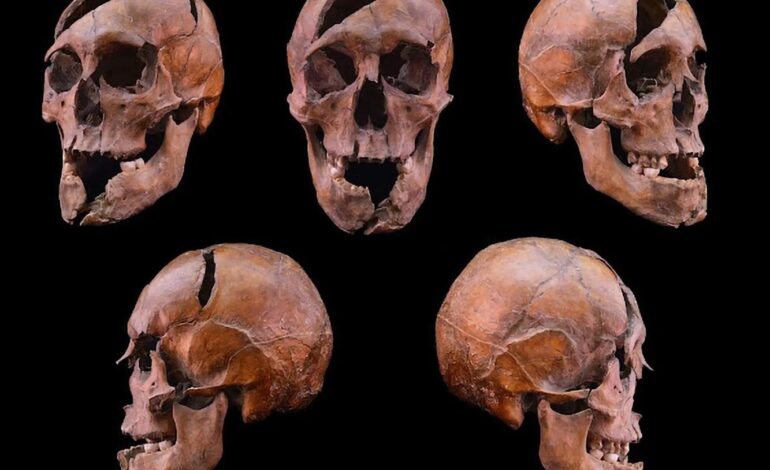DNA Breakthrough Identifies Violent Fate of Medieval Royalty

A significant breakthrough in forensic archaeology has unveiled the identity and tragic end of a royal figure from the 15th century. Researchers at the University of Leicester successfully utilized DNA analysis to confirm the identity of a skeleton discovered in a parking lot in Leicester, England, as belonging to the long-lost remains of King Richard III. This discovery not only sheds light on the monarch’s identity but also reveals the violent circumstances surrounding his death, which occurred during the Wars of the Roses.
The remains, excavated in 2012, have been the subject of intense scrutiny since their discovery. Initial investigations suggested they belonged to Richard III, the last king of the Plantagenet dynasty, who died in the Battle of Bosworth Field in 1485. Recent advancements in DNA technology have now provided undeniable proof, linking the skeleton to living descendants of Richard III’s family.
Researchers conducted extensive DNA testing, comparing the genetic material found in the remains with that of Michael Ibsen, a direct descendant. The analysis confirmed a match, establishing the skeleton as Richard III. The findings also highlight the brutal nature of his death, which included severe injuries consistent with battlefield trauma.
This research was published in the journal Nature, underscoring the collaboration between historians and scientists to solve historical enigmas. The DNA evidence not only elucidates the fate of Richard III but also serves as a testament to the advancements in genetic research that can bridge centuries of history.
The implications of this discovery extend beyond historical interest. It raises questions about the legacy of Richard III and how his reign has been perceived in modern times. Often depicted as a tyrant in literature, particularly in William Shakespeare‘s famous play, this new evidence invites a reevaluation of his character and the events that shaped his rule.
As the 500th anniversary of Richard III’s death approaches, this revelation offers a renewed interest in the events of the Wars of the Roses. Historians and the public alike are now encouraged to explore the complexities of the political landscape during Richard’s reign, including his connection to King Henry VI and the broader implications for the Plantagenet dynasty.
The research has garnered significant media attention and highlights the role of modern science in unearthing historical truths. It serves as a reminder of how innovative techniques can provide fresh perspectives on historical figures and events, transforming our understanding of the past.
In summary, the identification of Richard III through DNA analysis not only confirms his lineage but also uncovers the violent end he faced during a tumultuous period in English history. As more research emerges, it promises to deepen the narrative surrounding one of England’s most enigmatic kings.






